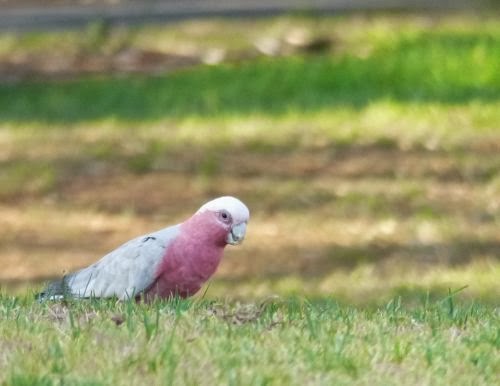I'm posting this photo because I used the digital zoom to capture the shot, 96x digital zoom. It isn't really great for quality because of the digital zoom rather than the optical zoom; it looks to me more like a painting than a photo. That is why I thought it rather interesting, seeing the difference in the digital zoom.
 |
| Sparrow, using 96x digital zoom | ©Christine Linton |
Technical details: Aperture Priority, F/2.8, shutter speed 1/2000, ISO 800, AFauto 1 area, white balance - daylight.
If you compare to the Galah below, although the sharpness of the Galah is not perfect because of having no tripod, it is better than the sparrow. The technical details are all identical to the sparrow above. This was shot at 24x Optical Zoom. I had turned off the digital zoom after seeing the results with the sparrow - great to be able to see so close from a distance, but not what I want in a photo. My next step is to get a tripod to sharpen up my focus.
 |
| Galah, using 24x Optical zoom | ©Christine Linton |
I have been looking on the internet for information about the difference, and found these two pages which explain clearly; the first one has 2 photos to compare (you can enlarge your page with the browser zoom tool to get the detail clearly).
http://www.dummies.com/how-to/content/the-difference-between-optical-zoom-and-digital-zo.html
The second page also explains well.
http://www.mediacollege.com/video/camera/zoom/digital-vs-optical.html
Optical zoom is the one to work with for best results, but the digital zoom may well be useful if it is impossible to get close enough and a poorer quality photo is your only chance to get something at least. (I speak strictly as a beginner learning, not as an expert).
+for+blog+600.jpg)

+cropped.jpg)


gulls+fighting+for+food,+capture+from+video.jpg)









